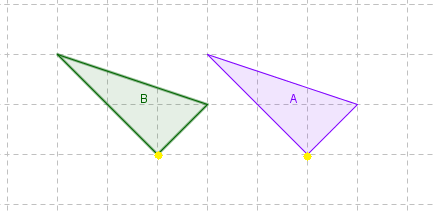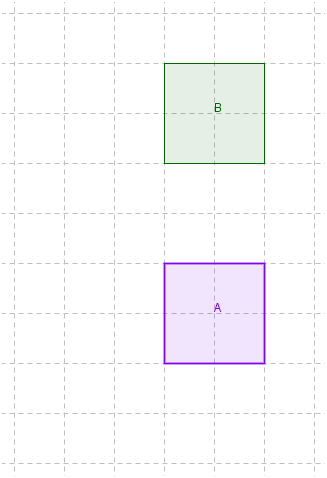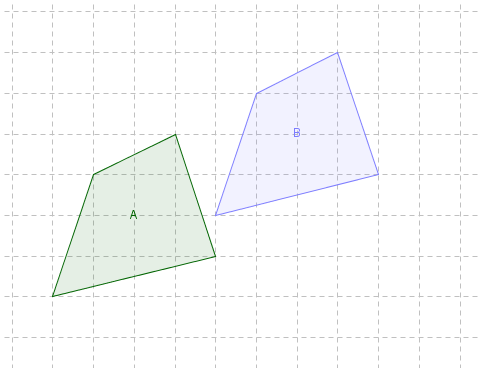3.04 Translations on the coordinate plane
Translations
A translation is what occurs when we move an object or shape from one place to another without changing its size, shape or orientation. Sometimes called a slide, a translation moves every point on an object or shape the same distance in the same direction.
To identify and describe a translation
- Look for corresponding points on the object
- Identify if the object has moved horizontally or vertically, and then describe that movement as left/right or up/down
- Count the number of places (or units) that the object has moved
Worked example
Question 1
Describe the translation from the preimage A to the image B.

Think: First, we need to look for corresponding points on the preimage and image. Next we need to identify the direction the preimage was moved. Finally, we need to state how far it moved in each direction.
Do:
- Notice the highlighted pair of corresponding points in yellow
- We can see that the shape has a horizontal translation and that the preimage A has to move left to become image B.
- Counting the units using the corresponding points we can see that object A has moved 3 units.
So the translation from A to B is 3 units left.
Reflect: If we know how we got from A to B, can we quickly determine how to go from B back to A?
Exploration
This applet shows the translation of an object to its image. You can use the sliders to change the horizontal and vertical amounts.
Practice questions
Question 2
What is the translation from triangle $B$B to triangle $A$A?

$2$2 units left
A$2$2 units right
B$3$3 units left
C$3$3 units right
D
Question 3
What is the translation from square $B$B to square $A$A?

$3$3 units up
A$3$3 units down
B$4$4 units up
C$4$4 units down
D
Question 4
What is the translation from quadrilateral A to quadrilateral B?

$2$2 units left and $4$4 units down
A$4$4 units left and $2$2 units down
B$2$2 units right and $4$4 units up
C$4$4 units right and $2$2 units up
D